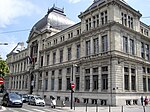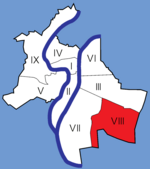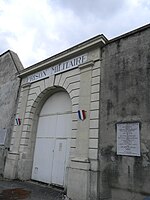Guillotière Cemetery

Guillotière Cemetery is the name of two adjacent but associated cemeteries in Lyon, France. The two cemeteries are distinguished according to when they were built: the new cemetery (Cimetière de La Guillotière nouveau) was built in 1854 and the old cemetery (Cimetière de La Guillotière ancien) in 1822. They are situated in the La Guillotière neighborhood of the city, in the 7th and 8th arrondissements, just south of Parc Sergent Blandan. They were built to address the shortage of burial spaces in the city. The old cemetery is just north of the new cemetery, and the two are separated by Avenue Berthelot and the railroad tracks connecting Perrache and Part-Dieu railway stations. The new cemetery is the largest in Lyon at 18 hectares (44 acres).
Excerpt from the Wikipedia article Guillotière Cemetery (License: CC BY-SA 3.0, Authors, Images).Guillotière Cemetery
Allée 19, Lyon 8th Arrondissement
Geographical coordinates (GPS) Address Nearby Places Show on map
Geographical coordinates (GPS)
| Latitude | Longitude |
|---|---|
| N 45.7385 ° | E 4.8569 ° |
Address
Allée 19
Allée 19
69008 Lyon, 8th Arrondissement
Auvergne-Rhône-Alpes, France
Open on Google Maps









